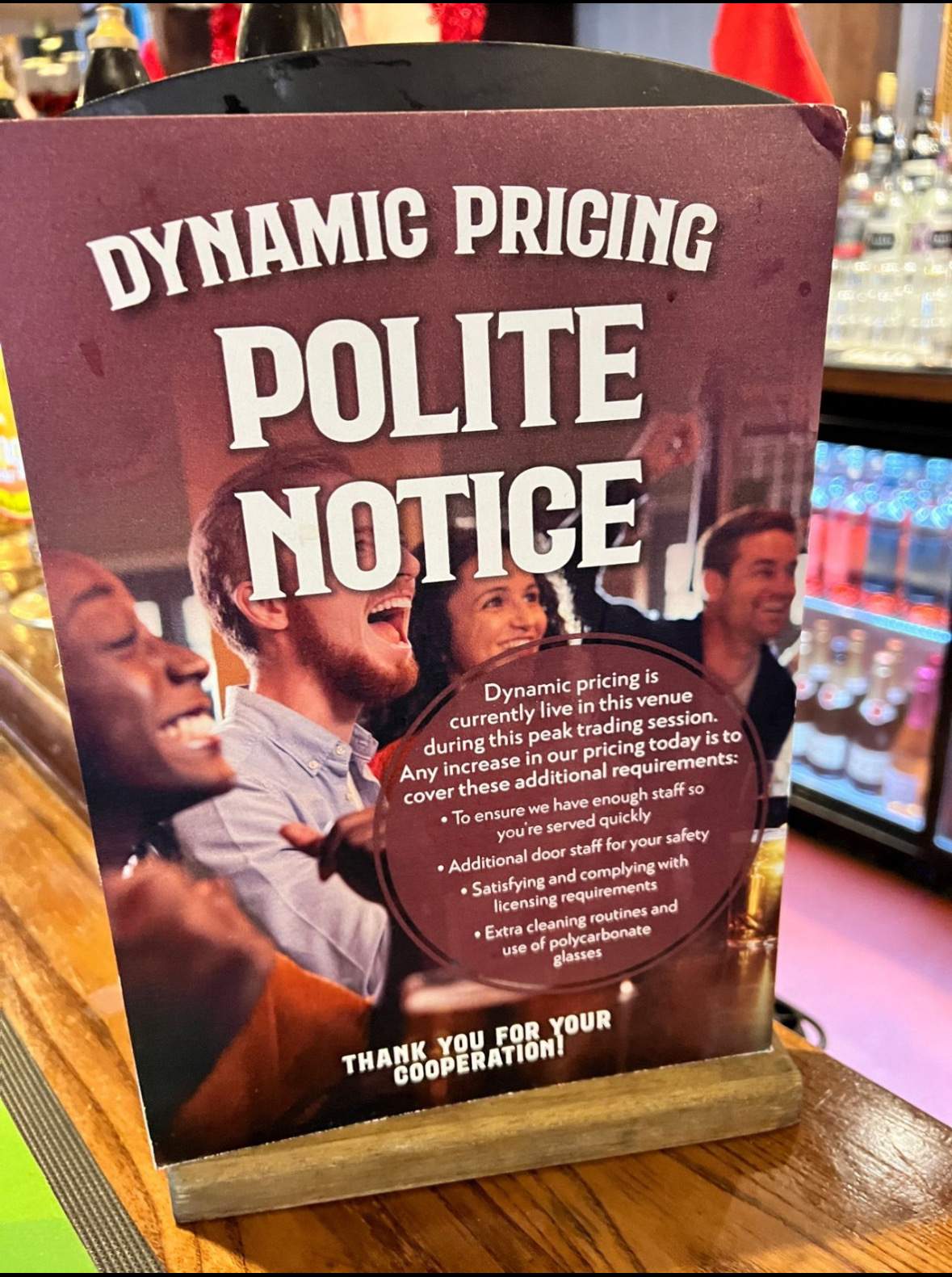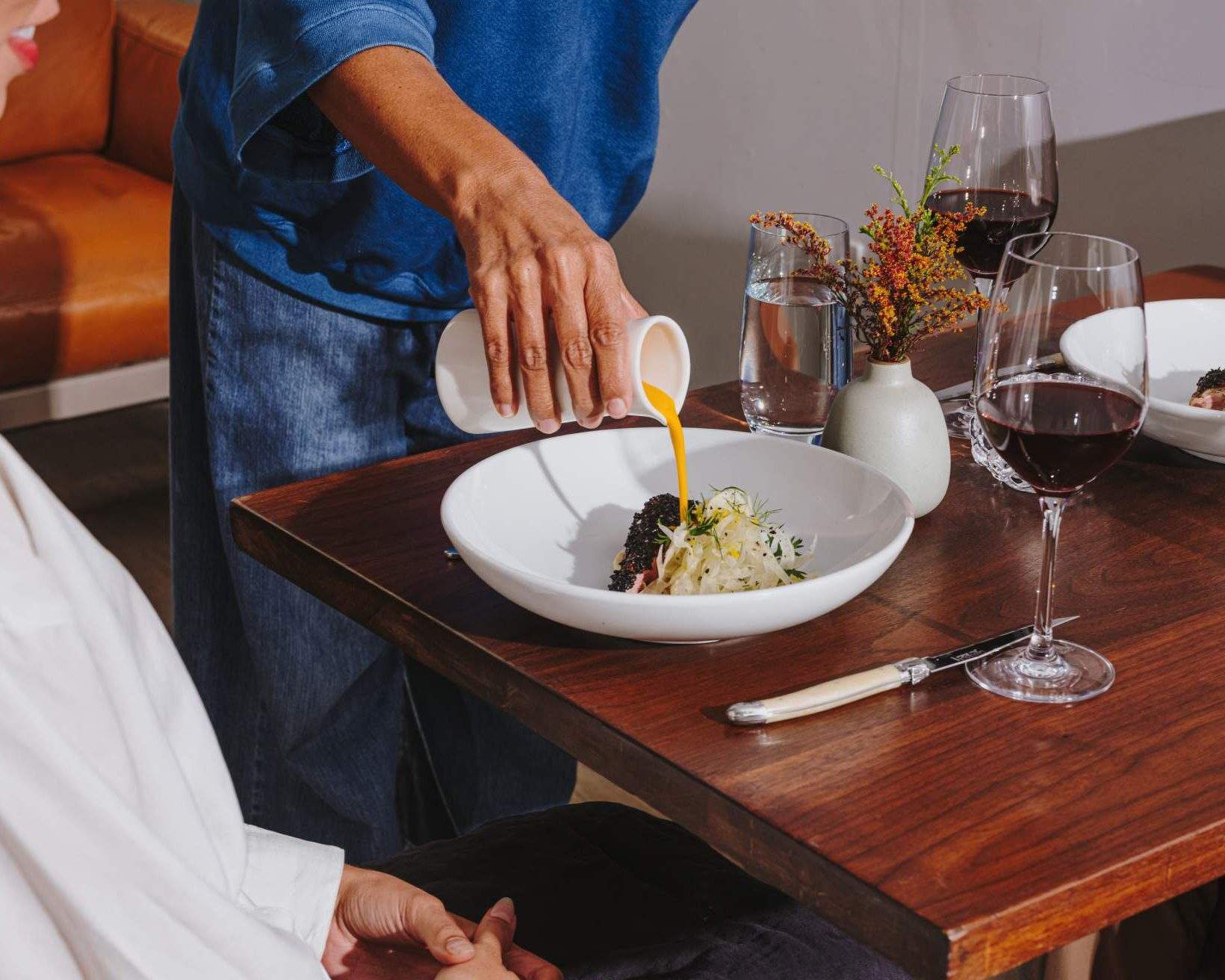The Ireland restaurant industry had another eventful year full of challenges and changes in 2023, yet exciting new trends continue to transform the dining scene. As we step into 2024, a wave of innovative ideas, technologies and experiences promises to shape the future of restaurants and hospitality.
The creativity and resilience defining Irish dining culture indicate an exciting future. With that in mind, here are seven restaurant trends to look forward to in 2024.
Quick Links
Book in advance
Data-driven decisions powered by AI
The rise of the cloud kitchen
Food waste management
Dynamic pricing
Labour and workforce innovations
The year of solo diners
1. There has never been a better time to book well in advance
Social media is turning once under-the-radar neighbourhood gems into viral must-visit hot spots overnight. Not to mention the hype around Dublin’s trendiest upscale eateries has reached fever pitch. This all means that booking even months out is becoming near impossible.
Securing a spot at not-to-be-missed joints far in advance is no longer just for special occasions. The average time diners are scheduling tables well in advance is on the up, and the trend looks set to continue this year. From Instagram darling brunch cafés to locals’ favourite curry houses, everything is getting booked up quicker.
Faced with snap-happy influencers and online reviews driving demand beyond capacity, savvy groups are finally coordinating better and earlier — because they have to. For those spontaneous last-minute types, the old days of walk-in availability are fading at coveted spots.
So whether guests are planning a special celebration meal or just craving that perfect eggs royale, the reality is clear for restaurants: make it as easy as possible for diners to book a spot at your spot.
Learn more about the best booking platform in town so your guests aren’t left disappointed.
2. Data-driven decisions powered by AI
More restaurants are discovering the power of data to enhance their offerings and operations through diner insights. Strategic number-crunching offers insightful revelations about diner preferences that allow you to tailor menus more sharply to ever-evolving palates and lifestyles.
Beyond menu engineering, data helps fine-tune marketing content towards target audiences. Meanwhile, streamlining your inventory and staffing needs, as well as reducing waste, helps lead to a healthy bottom line and eco-friendly practices.
Then there’s the advent of AI, which is helping improve guest interactions, whether it’s ChatGPT offering seamless booking experiences or tech’s ability to anticipate orders and personalise recommendations at lightning speed.
It looks like more profitable customer satisfaction is on the menu for restaurants plugging statistics into their decision-making. Prioritising the integration of data and tech indicates that, rather than classic fare, the trend points toward serving guests precisely what they crave – maybe even before they know it.

3. The rise of the cloud kitchen
The explosion of takeaways in recent years has fueled a complementary new restaurant concept: the emergence of cloud kitchens. These delivery-only establishments, sometimes called ghost or virtual kitchens, are compact commercial spaces dedicated solely to preparing cuisines for takeaway and delivery orders. Streamlining operations to specialise in volume production of a single brand or meal allows cloud kitchens to rapidly respond to customer orders placed through apps.
Lower overheads for rent and staff compared to traditional establishments provide new opportunities for entrepreneurial chefs or existing chains to launch delivery concepts while avoiding full-scale restaurant operation costs and challenges. For diners, it offers more dining options, landing conveniently at their front door.
Though they lack the ambience of dining out, for busy city workers on their lunch break or time-conscious families, the ability to access more cuisine varieties on-demand through cloud kitchens is hard to resist and provides restaurants with an additional revenue stream.
4. Food waste management
Sustainability is shaping up as a key ingredient in 2024’s dining scene as restaurants think up ingenious waste reduction strategies. After years of focusing on sourcing quality sustainable ingredients, many places now apply similar smarts to manage leftover waste responsibly.
Instead of costs and scraps overflowing in the bin, restaurants leverage IoT sensors, machine learning and analytics to gain waste oversight. Software helps track wasted amounts down to each ingredient and dish while identifying behavioural causes, from menu miscalculations to improper storage.
Armed with fine-grained food waste intelligence, restaurants can tackle deficiencies with more precision through measures like dynamic forecasting algorithms, staff training and inventory optimisation. Blending resourceful technology with operational adjustments helps restaurants trim unnecessary waste.
While benefiting the environment through judicious food usage, it also fosters higher profitability. As consumers grow concerned about dining’s sustainability impact, astute establishments getting lean through smart waste strategies could well have the ultimate competitive edge this year.
5. Dynamic pricing
Restaurants are increasingly using dynamic or “surge” pricing to maximise revenues, altering prices based on demand. This yield management tactic sets variable menu rates accounting for ingredient costs, labour, occupancy levels and booking popularity at different times. For instance, higher prices on Fridays and weekends balance lower charges on slower weekdays.
The use of customer data analytics can also guide pricing flexibility rather than creating random discounts. Tracking things like bill patterns helps identify high-demand items to upcharge while targeting deals toward elastic price-sensitive diners when tables risk sitting empty.
Although new for diners used to fixed menu sticker prices, dynamic pricing allows agile responses to rising overheads while optimising occupancy revenue. The key to success is understanding guests rather than providing blanket markdowns. With smart data-led fluid pricing, more restaurants look set to calibrate demand to optimal revenue with dynamic pricing.

6. Labour and workforce innovations
With pandemic turbulence and the cost-of-living crisis still causing labour shortages, Irish restaurants are getting creative with staffing. The wider hiring net now encompasses diverse untapped talent pools, such as second-chance workers, caregivers and guest workers.
Yet recruitment alone doesn’t fully cover the gaps. Hence, the rising integration of robotics and AI assists with cooking, cleaning and security operations. The tech transition helps lighten burdensome workloads while allowing human talent to focus on customer-centric roles.
Miso Robotics, a California-based startup, has developed “Flippy,” an AI kitchen assistant that assists with tasks like grilling, frying and plating. It uses integrated software with sensors and cameras to monitor food preparation and temperature control, with technological assistance particularly beneficial in the fast-food sector – where there are often high employee turnover rates and increasing minimum wages.
CaliBurger, a fast-food chain, partnered with Miso Robotics to bring Flippy’s burger-flipping capabilities to its restaurants and is planning to expand this technology to over 50 locations worldwide.
Still, most recognise automation has limits in a hospitality environment centred around human connections. The key is finding the right balance and leveraging tech to increase efficiency without losing the personal touches diners crave. With resilient flexibility to adapt, the Irish industry aims to serve up both tasty meals and meaningful experiences by innovatively blending robots and people power this year.

7. The year of the solo diner
More people are taking themselves on dates, and dining out solo is emerging as a growing niche shaping trends in 2024. OpenTable’s own reporting discovered an uptick, with solo dining increasing throughout 2023. Expect this trend to continue further into 2024.
Driven by younger demographics living alone in cities pursuing busy independent lifestyles, restaurants are now consciously catering to the solo market through measures like intimate counter dining, smaller plates and activities from live music to quiz nights.
Equally important is reducing any associated stigma or conspicuousness for the solo guest through warm, thoughtful service. By carefully designing seating plans interspersing duos and trios, restaurants enable more single visitors to blend right in.
The increasingly competitive nature of business is also prompting operators to woo this group’s spur-of-the-moment dining decisions as a differentiated revenue stream. The solo diner boom has arrived, and the Ireland restaurant sector is quickly clueing into their tastes, behaviours and expectations.
Summary: Industry restaurant trends in 2024
Despite ongoing challenges, 2024 is bursting with potential as Irish restaurants blend technological innovations, sustainability, evolved guest experiences and staffing creativity to thrive. By leaning into emerging food and hospitality advancements with its signature resilience, the industry seems poised to satisfy and delight more diners than ever this year.




